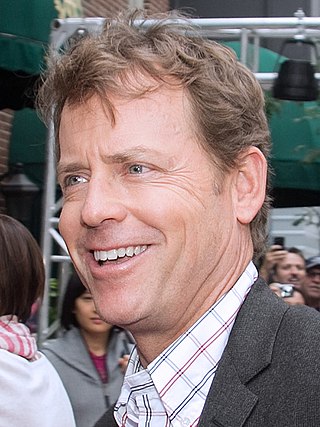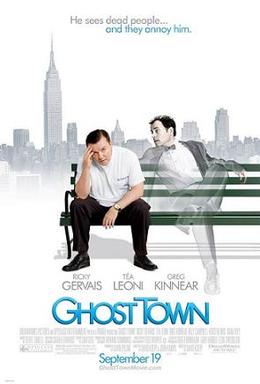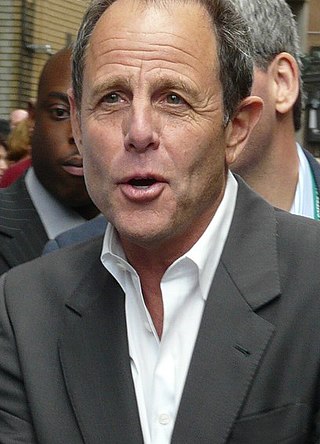
Thomas Alva Edison was an American inventor and businessman. He developed many devices in fields such as electric power generation, mass communication, sound recording, and motion pictures. These inventions, which include the phonograph, the motion picture camera, and early versions of the electric light bulb, have had a widespread impact on the modern industrialized world. He was one of the first inventors to apply the principles of organized science and teamwork to the process of invention, working with many researchers and employees. He established the first industrial research laboratory.

Chasing Amy is a 1997 American romantic comedy-drama film written and directed by Kevin Smith and starring Ben Affleck, Joey Lauren Adams, and Jason Lee. The third film in Smith's View Askewniverse series, the film is about a male comic artist (Affleck) who falls in love with a lesbian (Adams), to the displeasure of his best friend (Lee).

William Franklin Holden was an American actor and one of the biggest box-office draws of the 1950s. Holden won the Academy Award for Best Actor for the film Stalag 17 (1953) and the Primetime Emmy Award for Outstanding Lead Actor in a Limited or Anthology Series or Movie for the television miniseries The Blue Knight (1973).

The Kinetoscope is an early motion picture exhibition device, designed for films to be viewed by one person at a time through a peephole viewer window. The Kinetoscope was not a movie projector, but it introduced the basic approach that would become the standard for all cinematic projection before the advent of video: it created the illusion of movement by conveying a strip of perforated film bearing sequential images over a light source with a high-speed shutter. First described in conceptual terms by U.S. inventor Thomas Edison in 1888, it was largely developed by his employee William Kennedy Laurie Dickson between 1889 and 1892. Dickson and his team at the Edison lab in New Jersey also devised the Kinetograph, an innovative motion picture camera with rapid intermittent, or stop-and-go, film movement, to photograph movies for in-house experiments and, eventually, commercial Kinetoscope presentations.

A windscreen wiper or windshield wiper is a device used to remove rain, snow, ice, washer fluid, water, or debris from a vehicle's front window. Almost all motor vehicles, including cars, trucks, buses, train locomotives, and watercraft with a cabin—and some aircraft—are equipped with one or more such wipers, which are usually a legal requirement.

Gregory Buck Kinnear is an American actor and former talk show host. He was nominated for an Academy Award for Best Supporting Actor for his role in As Good as It Gets (1997).

Jason Statham is an English actor and martial artist. He is known for portraying characters in various action-thriller films who are typically tough, gritty, or violent. Statham has been credited for leading the resurgence of action films during the 2000s and 2010s. His film career through 2017 generated over $1.5 billion in ticket sales, making him one of the film industry's most bankable stars.
Thomas J. Armat was an American mechanic and inventor, a pioneer of cinema best known through the co-invention of the Edison Vitascope.

Sabrina is a 1995 American romantic comedy-drama film directed by Sydney Pollack from a screenplay by Barbara Benedek and David Rayfiel. It is a remake of Billy Wilder's 1954 film of the same name, which in turn was based upon the 1953 play Sabrina Fair.

Doris Helen Kearns Goodwin is an American biographer, historian, former sports journalist, and political commentator. She has written biographies of numerous U.S. presidents. Goodwin's book No Ordinary Time: Franklin and Eleanor Roosevelt: The Home Front in World War II won the Pulitzer Prize for History in 1995. Goodwin produced the American television miniseries Washington. She was also executive producer of "Abraham Lincoln", a 2022 docudrama on the History Channel. This latter series was based on Goodwin's Leadership in Turbulent Times.

Mary Elizabeth Anderson was an American real estate developer, rancher, viticulturist, and most notably the inventor of what became known as the windshield wiper. On November 10, 1903 Anderson was granted her first patent for an automatic car window cleaning device controlled from inside the car, called the windshield wiper. Her patent didn't get far as she got no manufacturing firms to agree to make her invention.
Captain Gladstone Adams was a professional photographer, inventor and chairman of Whitley Bay Urban District Council, and is one of several people claimed to have invented the windscreen wiper.

Robert William Kearns was an American mechanical engineer, educator and inventor who invented the most common intermittent windshield wiper systems used on most automobiles from 1969 to the present. His first patent for the invention was filed on December 1, 1964, after a few previous designs by other inventors had failed to gain any traction in manufacturing.
Trial films is a subgenre of the legal/courtroom drama that encompasses films that are centered on a civil or criminal trial, typically a trial by jury.

Ghost Town is a 2008 American fantasy comedy film directed by David Koepp, who also co-wrote the screenplay with John Kamps. It stars English comedian Ricky Gervais in his first leading feature-film role, as a dentist who can see and talk with ghosts, along with Téa Leoni as a young widow and Greg Kinnear as her recently deceased husband. Gavin Polone produced the film for Spyglass Entertainment and Pariah, and it was distributed by Paramount Pictures through the DreamWorks Pictures label.

Marc Abraham is an American film producer, director, and former president of Strike Entertainment, a production company he launched in early 2002 with a multi-year, first look arrangement with Universal Pictures.
An independent inventor is a person who creates inventions independently, rather than for an employer.
Pro se legal representation comes from Latin pro se, meaning "for oneself" or "on behalf of themselves" which, in modern law, means to argue on one's own behalf in a legal proceeding, as a defendant or plaintiff in civil cases, or a defendant in criminal cases, rather than have representation from counsel or an attorney.

Team of Rivals: The Political Genius of Abraham Lincoln is a 2005 book by Pulitzer Prize-winning American historian Doris Kearns Goodwin, published by Simon & Schuster. The book is a biographical portrait of U.S. President Abraham Lincoln and some of the men who served with him in his cabinet from 1861 to 1865. Three of his Cabinet members had previously run against Lincoln in the 1860 election: Attorney General Edward Bates, Secretary of the Treasury Salmon P. Chase and Secretary of State William H. Seward. The book focuses on Lincoln's mostly successful attempts to reconcile conflicting personalities and political factions on the path to abolition and victory in the American Civil War.

Abraham Lincoln's patent relates to an invention to buoy and lift boats over shoals and obstructions in a river. Abraham Lincoln conceived the invention when on two occasions the boat on which he traveled got hung up on obstructions. Lincoln's device was composed of large bellows attached to the sides of a boat that were expandable due to air chambers. Filed on March 10, 1849, Lincoln's patent was issued as Patent No. 6,469 later that year, on May 22. His successful patent application led to his drafting and delivering two lectures on the subject of patents while he was president.















